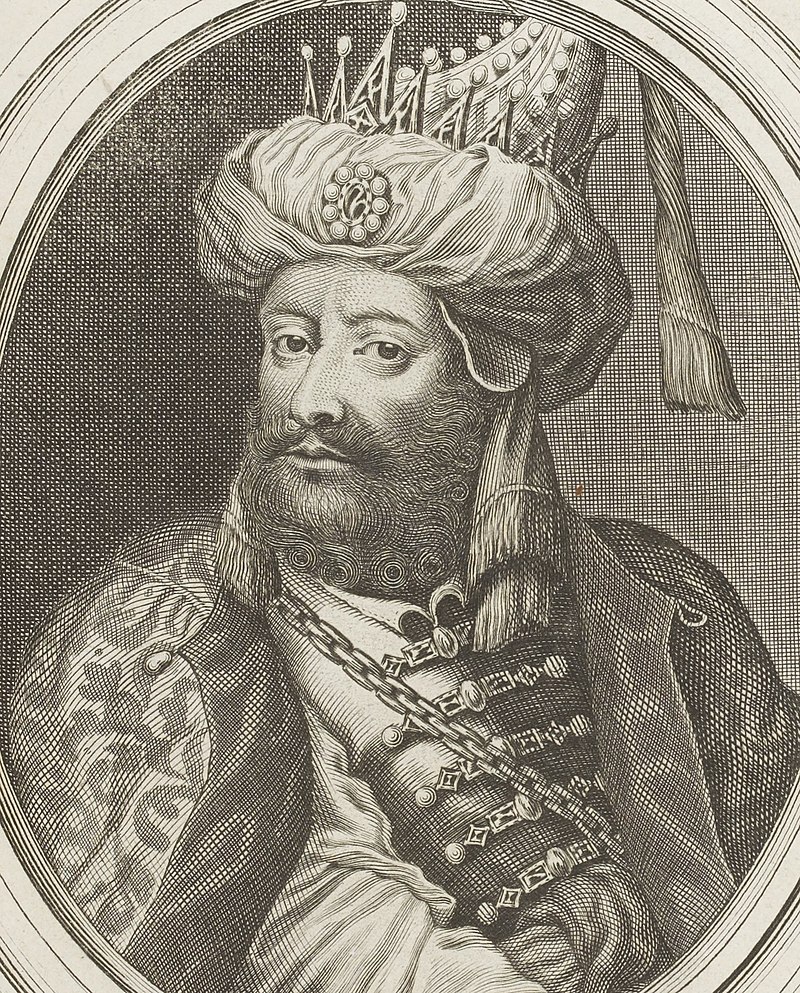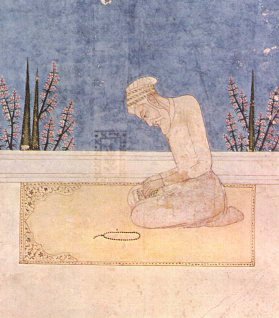Aurangzeb was no doubt one of the best administrators in Mughal Empire but his greed for getting the Mughal Empire extended and intact for a long time made the fate of the Mughals drastic and unstable. Aurangzeb has spent most of his time in Deccan facing the challenge from Marathas. It was the Hindu Marathi Leader Chatrapati Shivaji Maharaj who made the whole reign of Aurangzeb unstable and made him busy in clashes in Deccan.
In this section, we will go through the concept of Islamic law establishment by Aurangazeb, his taxation policy, and his policy on temples and mosques. Many scholars prevents Aurangzeb’s policy of destruction of temples by adding that he also ordered to demolish several mosques as well. But he mostly ordered the demolition of those mosques that were related to his opponents or rebellions.
Mughal Empire’s Concept of Imperial Bureaucracy

Aurangzeb was a very smart and clever policymaker. His words in his courts and policies were often mismatched, and sometimes it also differs in ground action. For example, he was found to quote that his bureaucracy must include more Hindus & Shia Muslims. Several scholars also found to state about his statement in court where Sunni Muslims were objecting to the induction of Hindus and Shia in court and Aurangzeb was scolding them for objecting to the role of Hindus in Hindustan.
Aurangzeb employed more Hindus in administration than any other Mughal emperor. imperial bureaucracy employed significantly more Hindus than that of his predecessors. The number of Hindu administrators seemed to rose to 32% between 1679 and 1707, many Hindu officials were Marathas & Rajputs. This step might create an illusionary image of secular Aurangzeb but when you look for his war and expansion moves, you will find out that it was a tactic by the emperor to tackle Marathas and Rajputs in the Warfield. Aurangzeb was found to state that Hindus must be higher in administration activities because Hindustan belongs to Hindus.
Mughal Empire under Aurangzeb: Establishment of Islamic Law
As earlier mentioned, Aurangzeb got more Hindu administrators in his nobility than any other Mughal Emperor. This was the case where several scholars were tried to portray Aurangzenb as secular and tried to cover his order to demolish various Hindu temples. But this was not the truth. Aurangzeb was always keen to capture the Deccan region. Chatrapathi Shivaji Maharaj, a prominent Maratha Hindu Leader was openly challenging his throne and was controlling more of an area in the Deccan region. This was the reason for hiring more Hindus especially Marathas in administration so that Aurangzeb can understand the Maratha war tactics.
Aurangzeb spent most of his time in Deccan to fight with Marathas but unsuccessfully Marathas were always superior to his army in courage and valor. Of course, Marathas were lesser in number but they were street smart fighters who knew every tactic of war and can exhaust themselves to save their motherland. This courage worked in the favor of Marathas. Also, Aurangzeb was installing Hindu Rajputs in his nobility to continue with the policy of peace with Rajputs started by Akbar.
As per Aurangzeb, a Rajput noble (In the court of Shah Jahan) Jaswant Singh (also the ruler of Jodhpur), ordered the destruction of several mosques in Jodhpur in 1658. Jaswant Singh was defeated by Aurangzeb in the Battle of Dharmat. Around the year 1667, Prithviraj Singh (son of Jaswant Singh) was said to be killed by a poisoned dress gifted by Aurangzeb. The destruction of mosques by Jaswant Singh might have triggered the idea of the destruction of Temples in Aurangzeb’s mind.
Establishment of Islamic law

Aurangzeb was an orthodox Muslim ruler. Subsequent to the policies of his three predecessors, he endeavored to make Islam a dominant force in his reign. However, these efforts brought him into conflict with the forces that were opposed to this revival.
Historian Katherine Brown has noted that “The very name of Aurangzeb seems to act in the popular imagination as a signifier of politico-religious bigotry and repression, regardless of historical accuracy.” The subject has also resonated in modern times with popularly accepted claims that he intended to destroy the Bamiyan Buddhas. As a political and religious conservative, Aurangzeb chose not to follow the secular-religious viewpoints of his predecessors after his ascension.
Shah Jahan had already moved away from the liberalism of Akbar, although in a token manner rather than with the intent of suppressing Hinduism, and Aurangzeb took the change still further. Though the approach to the faith of Akbar, Jahangir, and Shah Jahan was more syncretic than Babur, the founder of the empire, Aurangzeb’s position is not so obvious.
His emphasis on sharia competed, or was directly in conflict, with his insistence that zawabit or secular decrees could supersede sharia. The chief qazi refusing to crown him in 1659, Aurangzeb had a political need to present himself as a “defender of the sharia” due to popular opposition to his actions against his father and brothers.
Despite claims of sweeping edicts and policies, contradictory accounts exist. Historian Katherine Brown has argued that Aurangzeb never imposed a complete ban on music. He sought to codify Hanafi law by the work of several hundred jurists, called Fatawa-e-Alamgiri. It is possible the War of Succession and continued incursions combined with Shah Jahan’s spending made cultural expenditure impossible.
He learned that at Sindh, Multan, Thatta, and particularly at Varanasi, the Hindu Brahmins attracted large numbers of indigenous local Muslims to their discourses. He ordered the Subahdars of these provinces to demolish the schools and the temples of non-Muslims. Aurangzeb also ordered Subahdars to punish Muslims who dressed like non-Muslims. The executions of the antinomian Sufi mystic Sarmad Kashani and the ninth Sikh Guru Tegh Bahadur bear testimony to Aurangzeb’s religious policy; the former was beheaded on multiple accounts of heresy, the latter, according to Sikhs, because he objected to Aurangzeb’s forced conversions.
Discriminatory Taxation Policy
Aurangzeb has imposed a Zaziya tax on Hindus. Zaziya was a tax that used to be collected from Hindus for being Hindus. However, Aurangzeb was not the first ruler to do so, before that many Muslim rulers have implemented this funniest and hilarious tax on people where a majority were Hindus. However, in the case of Aurangzeb, it can be said that it was implemented after numerous rebellions by Rajputs, Sikhs, and Hindu nobles and rulers. For example, in 1678 there was a great Rajput rebellion, public execution of several Hindu and Sikh rebellions, etc. As per historian Khafi Khan who died in the year 1733 said that Zaziya was never levied on the ground and was only present in papers.
He imposed Jizya, a military tax on non-Muslims who were not fighting for the Mughal Empire in his second decade of ruling in the year 1679. It may be noted that women, children, elders, handicapped, the ill, the insane, monks, hermits, slaves, and musta’mins—non-Muslim foreigners who only temporarily reside in Muslim lands were exempted from the jizya. Further, Aurangzeb levied discriminatory taxes on Hindu merchants at the rate of 5% against 2.5% on Muslim merchants. He ordered the dismissal of Hindu quanungos and patwaris from revenue administration.
Policy on Temples and Mosques
During his reign, Aurangzeb ordered the destruction of many temples and some mosques. For example, he ordered the destruction of Vishvanath Temple at Varanasi for being a center of conspiracy against the state, and he ordered the destruction of the Jama Masjid at Golkunda after finding out that its ruler had built the mosque in order to hide revenues from the state.
Aurangzeb displayed a particular animus towards Hindus and their temples. In the first volume of his Pulitzer Prize-winning book series, historian Will Durant stated the following:
Aurangzeb cared nothing for art, destroyed its “heathen” monuments with coarse bigotry, and fought, through a reign of half a century, to eradicate from India almost all religions but his own. He issued orders to the provincial governors, and to his other subordinates, ‘to raze to the ground all the temples of either Hindus or Christians, to smash every idol, and to close every Hindu school.
In one year (1679–80) sixty-six temples were broken to pieces in Amber alone, sixty-three at Chitor, one hundred and twenty-three at Udaipur; and over the site of a Benares temple especially sacred to the Hindus he built, in deliberate insult, a Mohammedan mosque. He forbade all public worship of the Hindu faiths and laid upon every unconverted Hindu a heavy capitation tax.
As a result of his fanaticism, thousands of the temples which had represented or housed the art of India through a millennium were laid in ruins. We can never know, from looking at India today, what grandeur and beauty she once possessed. Aurangzeb converted a handful of timid Hindus to Islam, but he wrecked his dynasty and his country.
A few Moslems worshiped him as a saint, but the mute and terrorized millions of India looked upon him as a monster, fled from his tax-gatherers, and prayed for his death. During his reign the Mogul empire in India reached its height, extending into the Deccan; but it was a power that had no foundation in the affection of the people, and was doomed to fall at the first hostile and vigorous touch. The Emperor himself, in his last years, began to realize that by the very narrowness of his piety he had destroyed the heritage of his fathers.
Aurangzeb changed the name of one of Hinduism’s holiest cities, Benaras, to Muhammadabad. Among the Hindu temples, he demolished were three of the most sacred, the Kashi Vishwanath temple, Kesava Deo temple, and Somnath temple, and built large mosques in their place. In 1679, he ordered the destruction of several prominent temples that had become associated with his enemies, including those of Khandela, Udaipur, Chittor, and Jodhpur.
Ian Copland says that he built more temples than he destroyed. Ram Puniyani states that Aurangzeb was not fanatically anti-Hindu, but rather continuously adapted his policies depending on circumstances. He banned the construction of new temples, allowed the repair and maintenance of existing temples, and even made generous donations of jagirs to many temples to gain the goodwill of his Hindu subjects. There are several firmans (orders) in his name, supporting temples and gurudwaras, including Mahakaleshwar temple of Ujjain, Balaji temple of Chitrakoot, Umananda Temple of Guwahati, and the Shatrunjaya Jain temples, among others.

